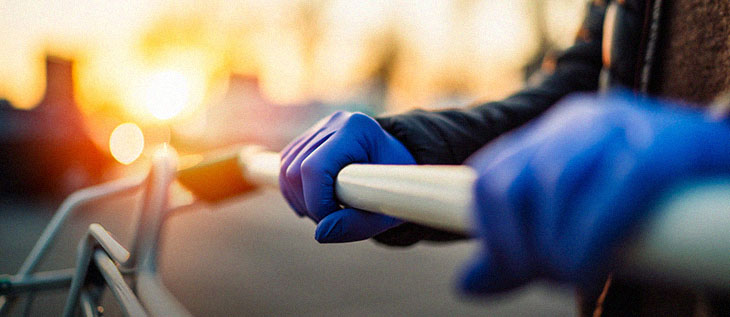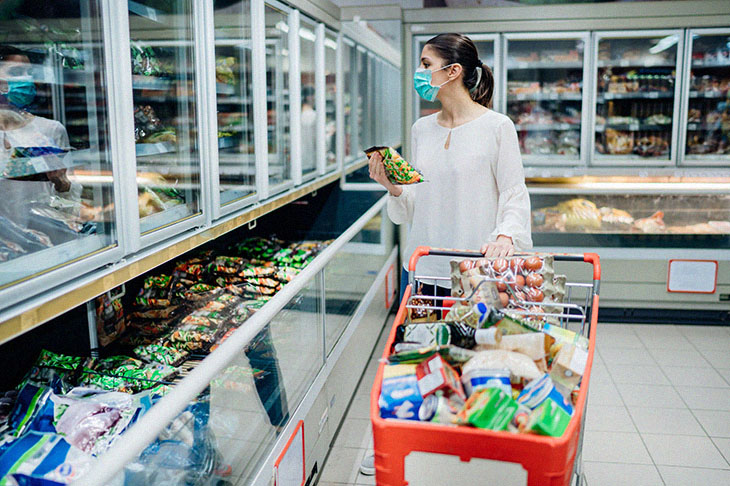
Coronavirus has changed the world in more ways than one. Sadly, the end to this pandemic is nowhere in sight, which means people need to find ways to survive in this “new normal.” From the way people work, to the way they work out, with kids now requiring to do school at home, to the way people go grocery shopping, nothing has remained the same.
People are now requested to practice social distancing, which means that everyone is asked to stand at least 1 meter away from one another, mostly when they are out in public. The need to stay at least 6-feet away from others, as well as wearing masks, helps lessen the spread of this incredibly contagious disease. Moreover, people are requested to stay at home and shelter in place as much as possible, forcing everyone to find ways to cope in this new life amidst the ongoing global pandemic.
Additionally, the numbers have been on the rise all throughout the world with the United States reaching over 3 million positive cases since the start of the outbreak. But despite being on lockdown, people still need to eat right? Which also means that they need to find safe ways to do that.
So what do you do in order to keep safe and virus free when it comes to getting food? While most groceries have managed to remain open and keep their refs pretty stocked for their shoppers, one question remains, is it safe to go? Many also wonder just how much danger they are they in when they leave their homes and head to the one place that everyone has to go. Do these supermarkets ensure their customers that they are keeping their stores clean and disinfecting every day? And would getting groceries delivered to their home be a safer option for them when their supplies are running low?
If you happen to be wondering about those same questions, here are some things that you need to know.
First of all, people need to assess their own physical health to know if they are at higher risk of getting sick if they contract COVID-19. Dr. Chris J Wiant, M.P.H., Ph.D of the Water Quality and Health Council explains that, “High risk individuals include the elderly, immunocompromised, people with respiratory ailments, or undergoing cancer treatment, among others.”
Aside from those suffering from these ailments, the Centers for Disease Control and Prevention (CDC) shares that this list of “high risk” people should also include those suffering from diabetes and heart disease.
According to Dr. Wiant, this means that “[These populations] should avoid any crowds and avoid going in public at the present time unless absolutely necessary.”
“Those [who are] not high-risk can go to the store but should practice good personal hygiene. To help protect the elderly and sick, lower risk individuals may want to offer to get groceries or other necessary supplies for them,” he added.
According to the CDC, 1 in every 4 Americans die from heart disease each year, which means that millions of people from all over the country are at a much higher risk if they should get coronavirus.
If you belong to this “higher risk” group, the best option would be to get a delivery service. But it’s important to know that this method is not 100% risk free either. It would actually be best to ask someone to buy your supplies for you so that you don’t need to go out and expose yourself to the virus.
Unfortunately, there are a number of immunocompromised folks that don’t have anyone to help them out during this time. This means that they have no choice but to go out and get their groceries and basic necessities for themselves. Thankfully there are a few ways that people can help reduce their risk of contracting the disease and make grocery shopping safer all around.
Dr. Wiant shares the “best practices for conscious grocery shopping while social distancing” below:
1. If you will order your groceries for delivery or pick up
The first rule is to be sure to ask your delivery guy to just leave your groceries or packages outside your door. Dr. Wiant iterates, “If contact-less delivery of groceries or meals is available, opt for it.” Unless you or the delivery person have been tested, there’s no way of knowing whether either of you is a carrier of the virus, which is why you should try and keep contact to minimal to none. Many services accept instructions from buyers about where and how to leave their groceries for them.
Also, should you plan on giving the delivery person a tip, find a way to do it electronically so that you lessen any need to transfer cash from one hand to another. Of course, be sure to wash your hands before and after getting your groceries from wherever they were delivered. The CDC also recommends that everyone wash their hands “with soap and water for at least 20 seconds,” even if research shows that “the risk of contracting the virus from contaminated surfaces – such as bags and packaging – is low.” It’s always best to be careful regardless.

2. If you have to go to a store
For those that have no choice but to head to the grocery store, the best recommendation is to go when it’s not over crowded. Since the virus is known to be easily transmitted from very close contact with someone that’s infected, social distancing is the best defense when it comes to lowering your risk of getting the virus. Of course, while you can’t predict the number of people that will be in the store, and there are more than you thought would be there when you go, just get what you need and get out as quick as possible.
Even if you see someone you know, just wave politely and be on your way. It’s safer to just give them a call than to stop and have a conversation at this point. And whatever you do, don’t shake hands or worse, hug anyone no matter how starved you may be for attention and a little human contact.
At the same time, be sure to bring alcohol and sanitizing wipes with you. These are items you can use to sanitize the shopping carts or baskets that you’ll use while getting your items. Although some recommend using gloves, the CDC does not since oftentimes, gloves that touch a contaminated product or item will just contaminate the next thing you touch. And whatever you do, avoid touching your eyes, nose, and face at any costs until you can actually wash your hands with soap and water for the recommended length of time.
In the meantime, Dr Wiant cautions people to “use hand sanitizer after going through the checkout.”
3. How to wash your groceries and other items when you get home
Now that you have your groceries in your home, you will still need to disinfect them, especially the nonporous containers. These include items like cans, bottles, plastic, and jars made out of either glass, plastic or metal. Most disinfecting wipes can be used, or you can choose to make your own. The CDC recommends “mixing 1/3 cup of bleach per gallon of water or 4 teaspoons of bleach per quart of water.” Be sure to wipe down everything and allow them to sit for at least one minute before wiping them down again to remove wetness.
For food, just like how people should treat their fresh fruits and vegetables on a normal basis, they need to be cleaned before ingesting. Be sure to wash them under flowing water while rubbing them with your bare, clean hands. Unless you have an all-natural produce wash, then plain, clean water would be best. Thankfully, research shows that there is “very little evidence that a respiratory disease is transmitted through produce.” And to be extra cautious, all surfaces used to unpack and fix groceries will also need to be disinfected and wiped down as well.
In the end, since everyone has to eat, figuring out the best way to make that happen is truly key to keeping safe and virus-free. The most important thing for people to remember is to follow social distancing rules, whether in stores or having things delivered to their homes. They also need to follow basic rules and protocols to keep themselves and anyone else at a lower risk for contracting COVID-19 by wearing a mask, keeping a meter apart from others and disinfecting everything.



